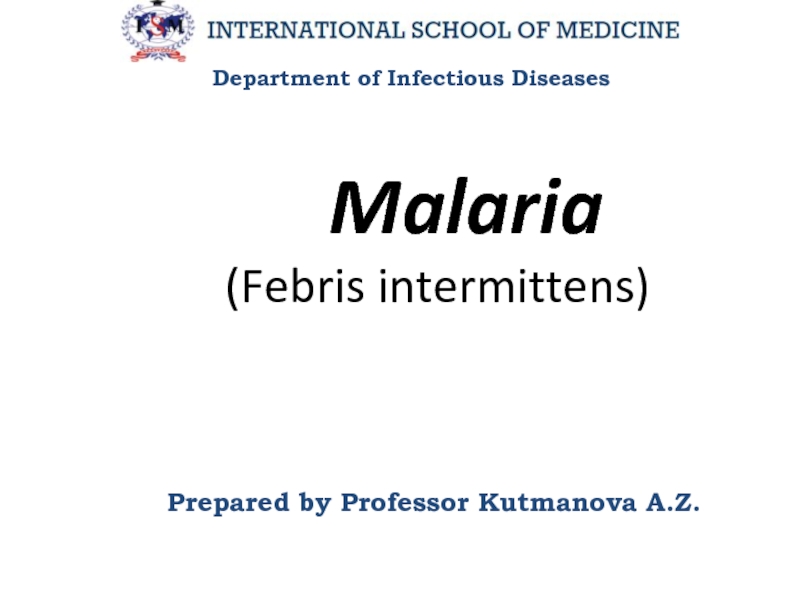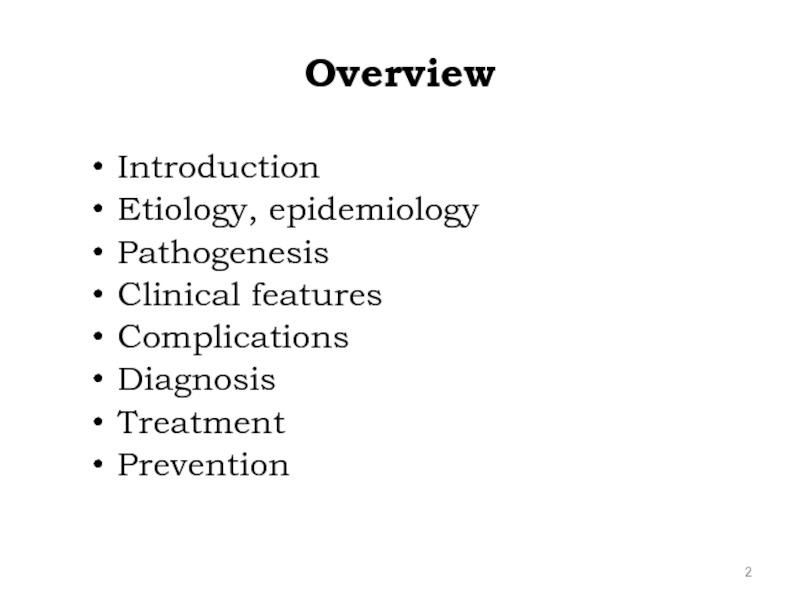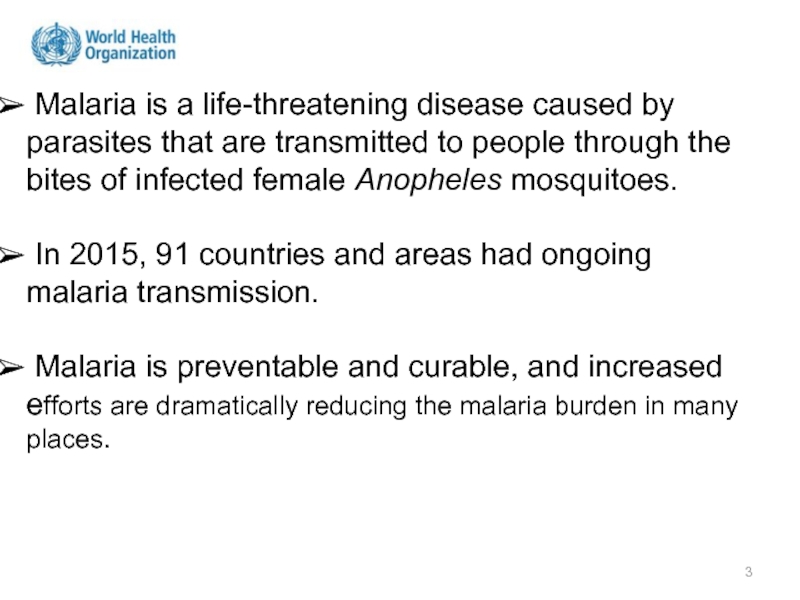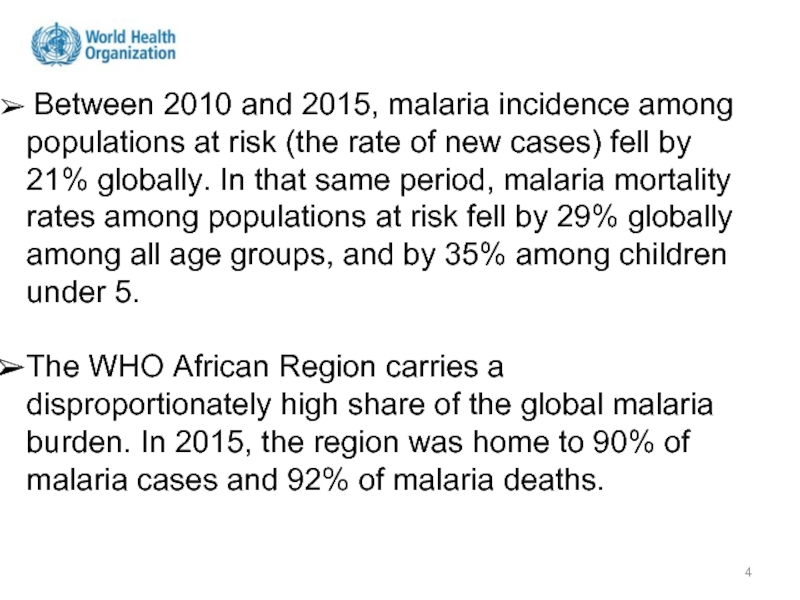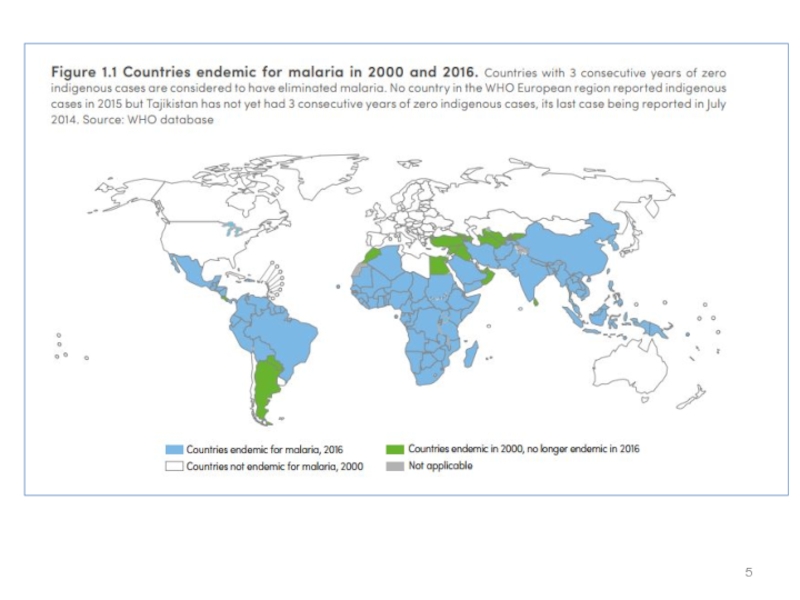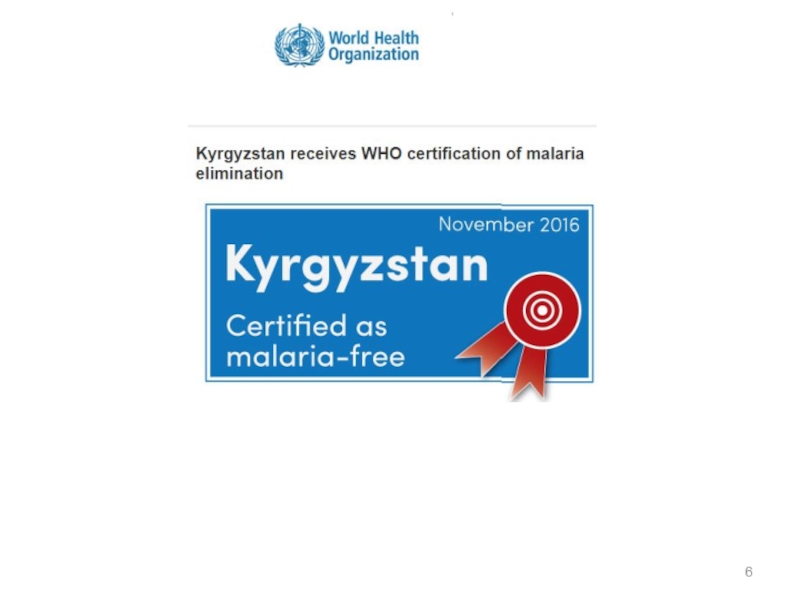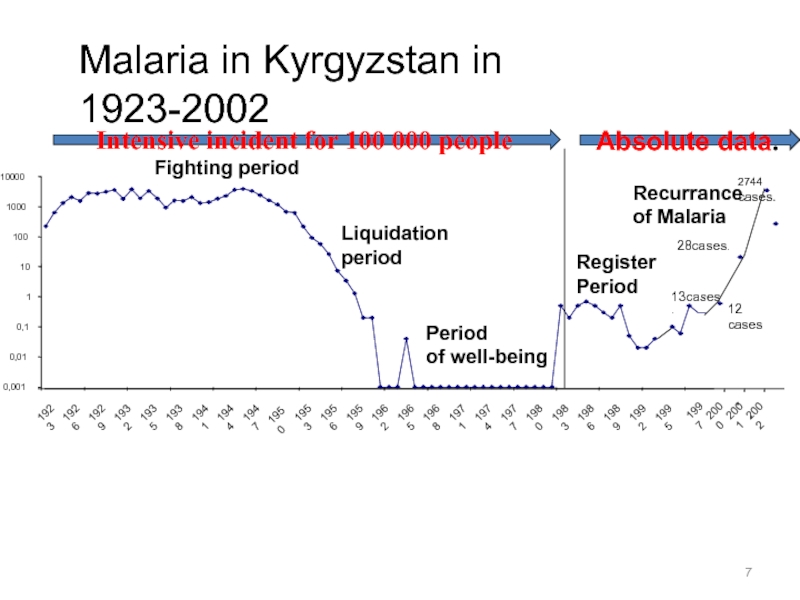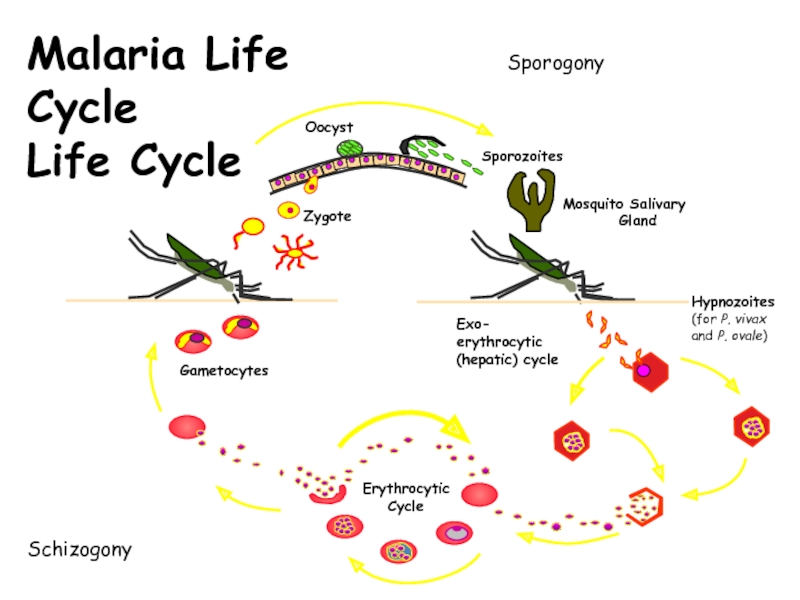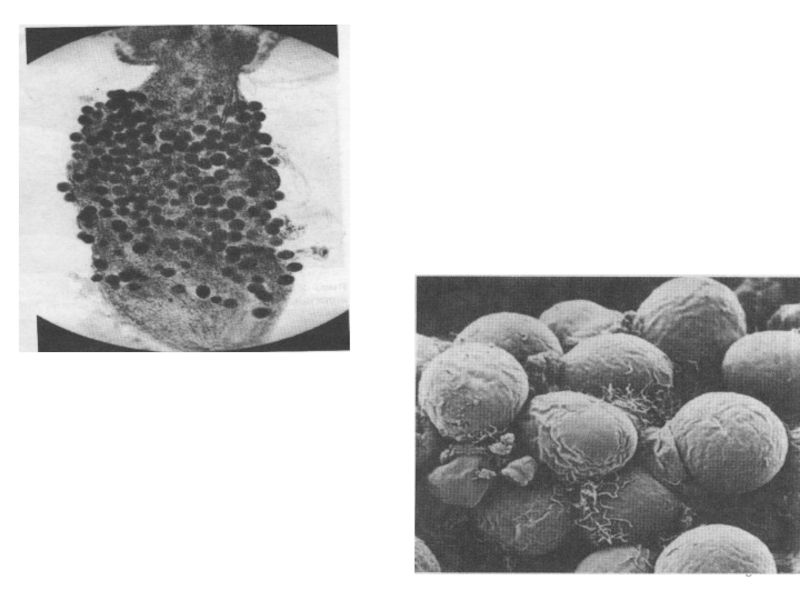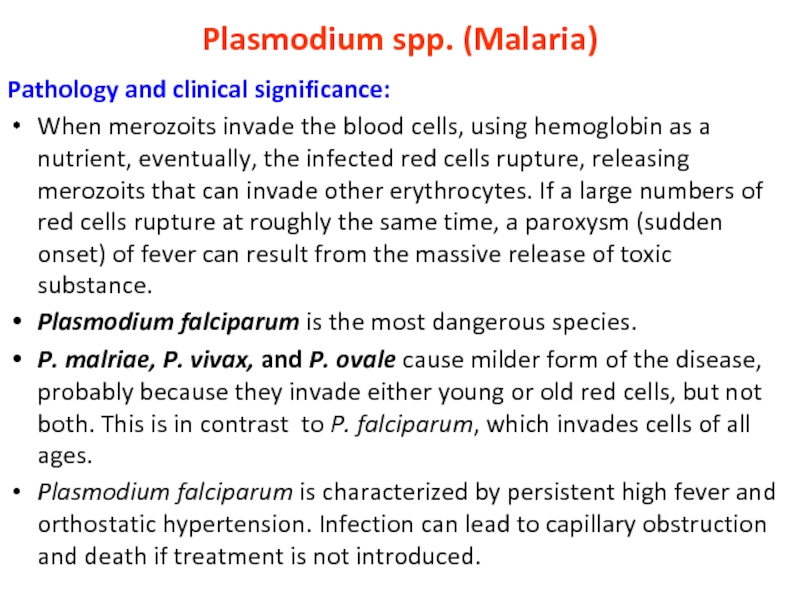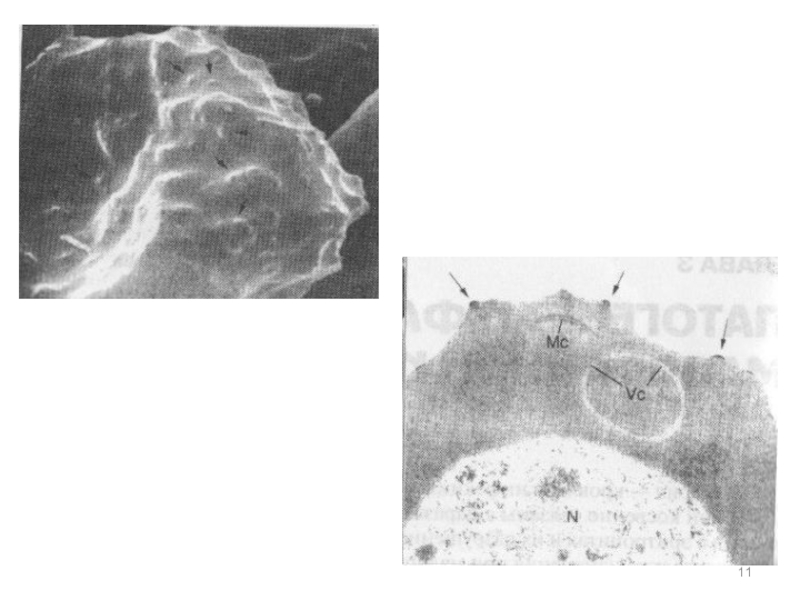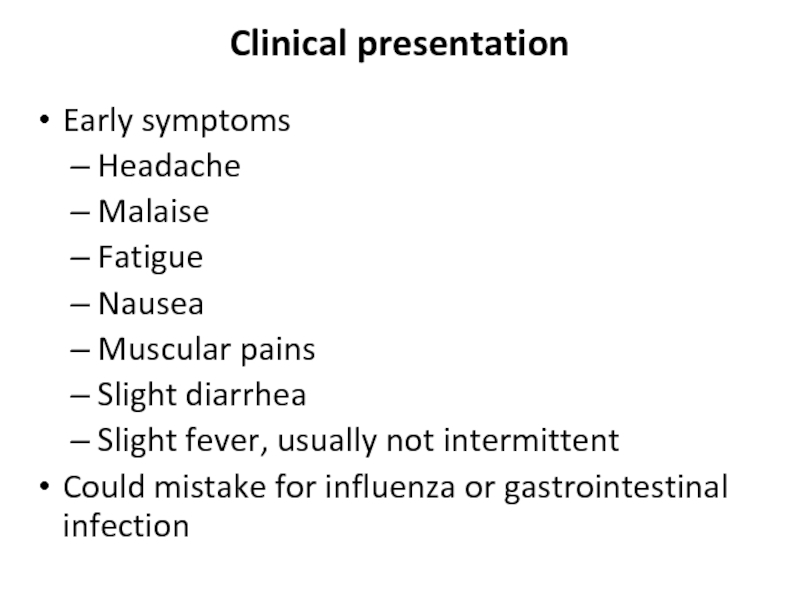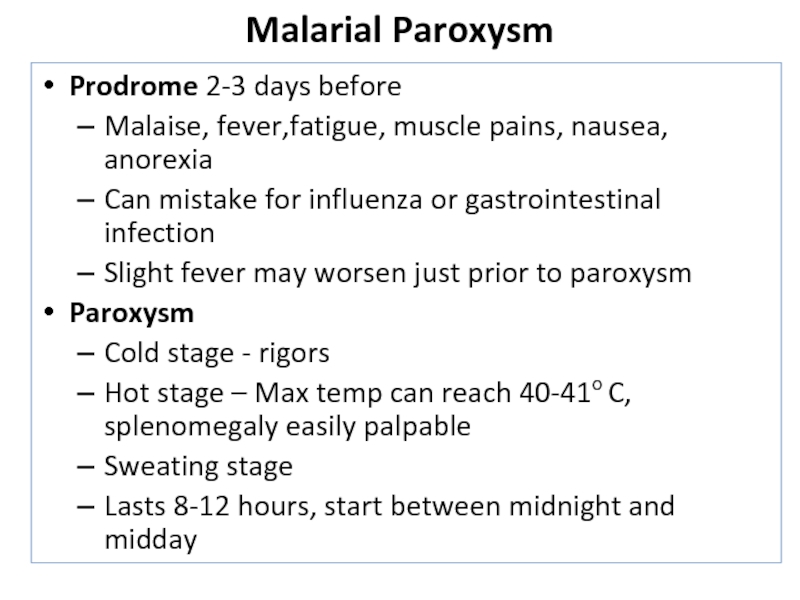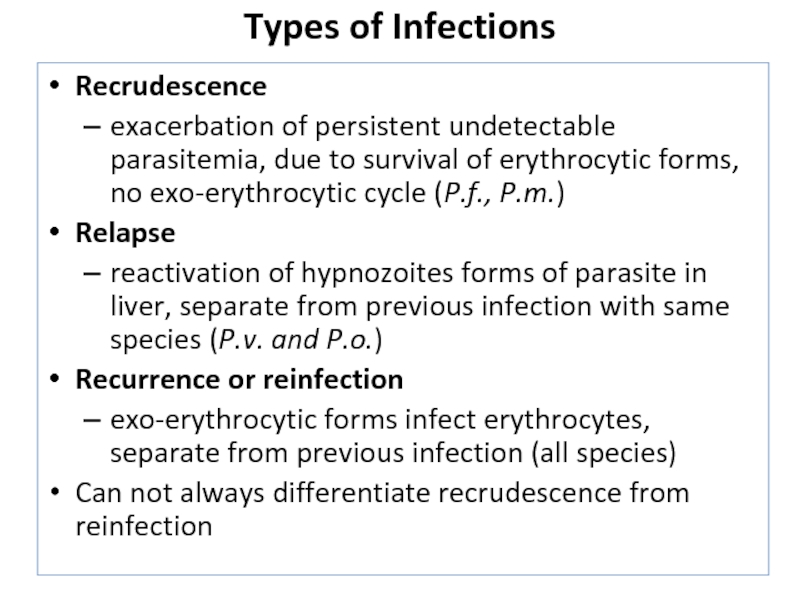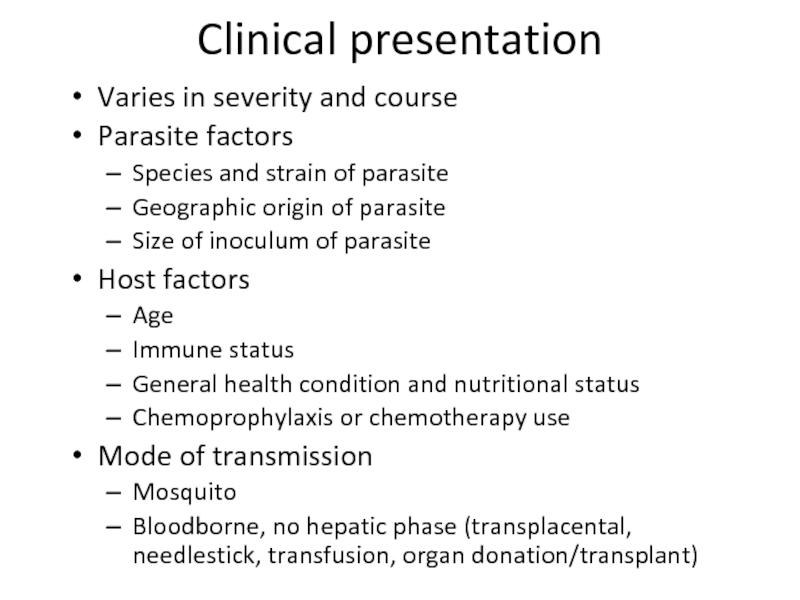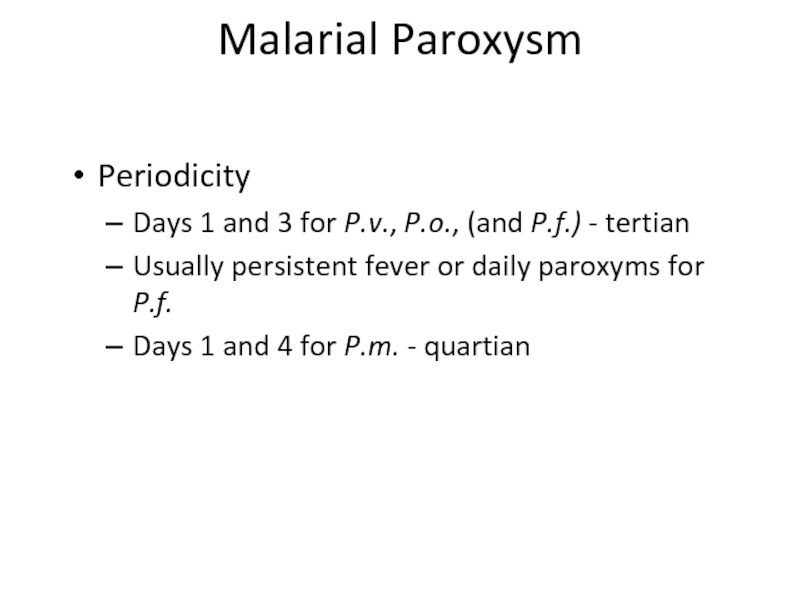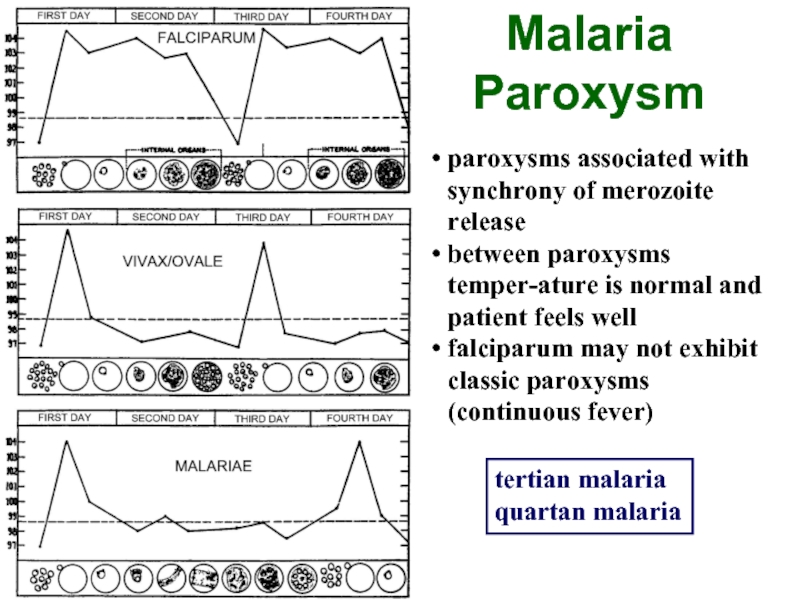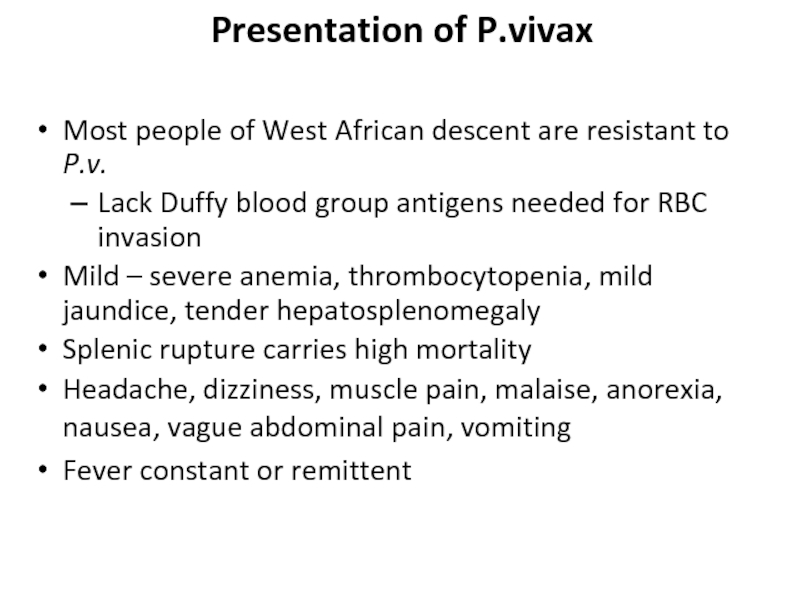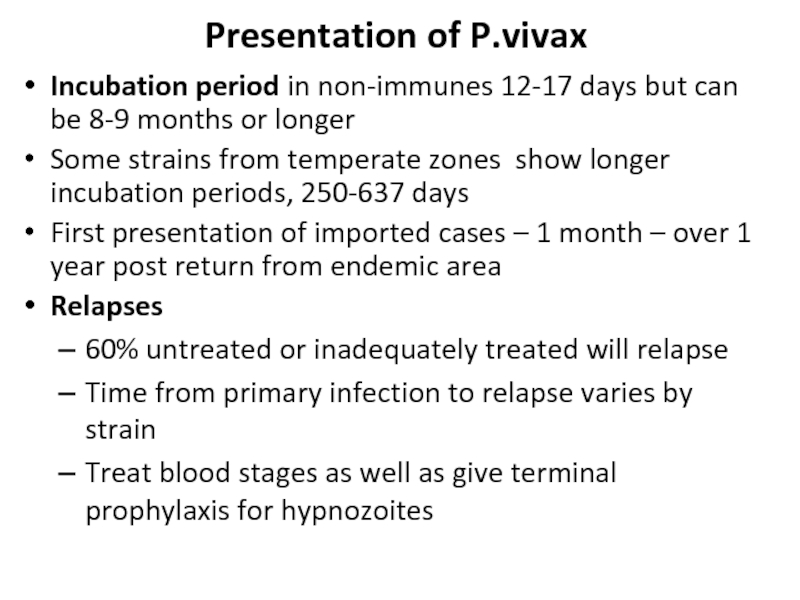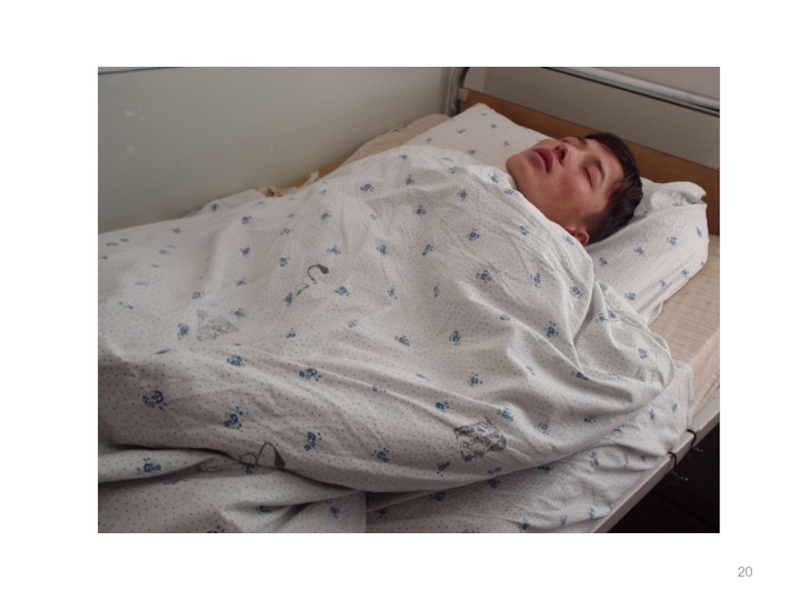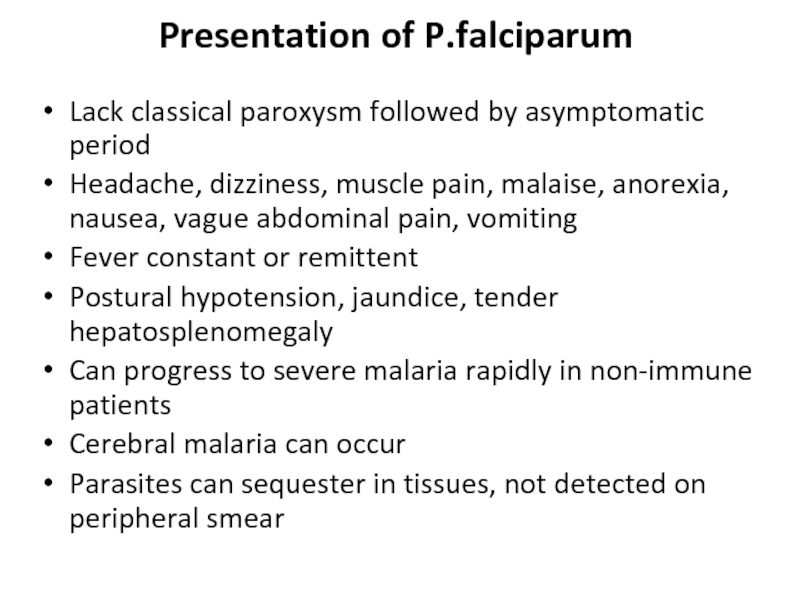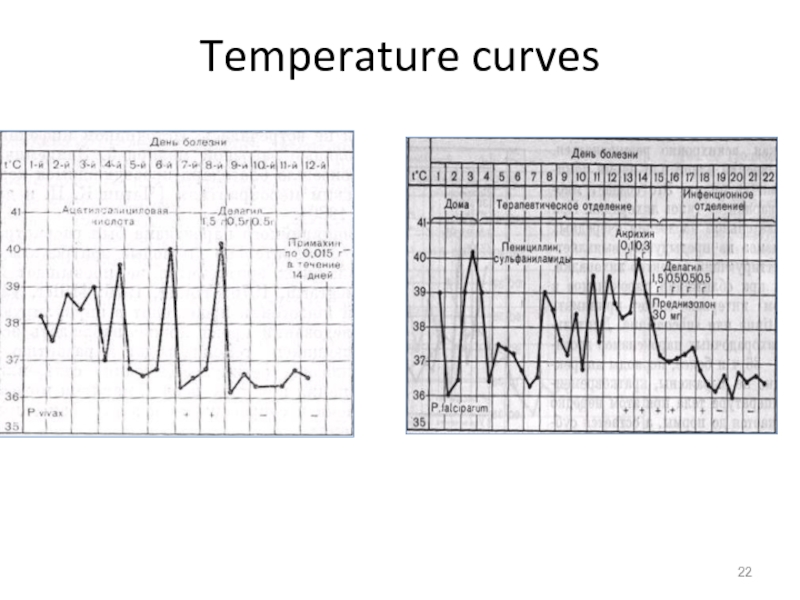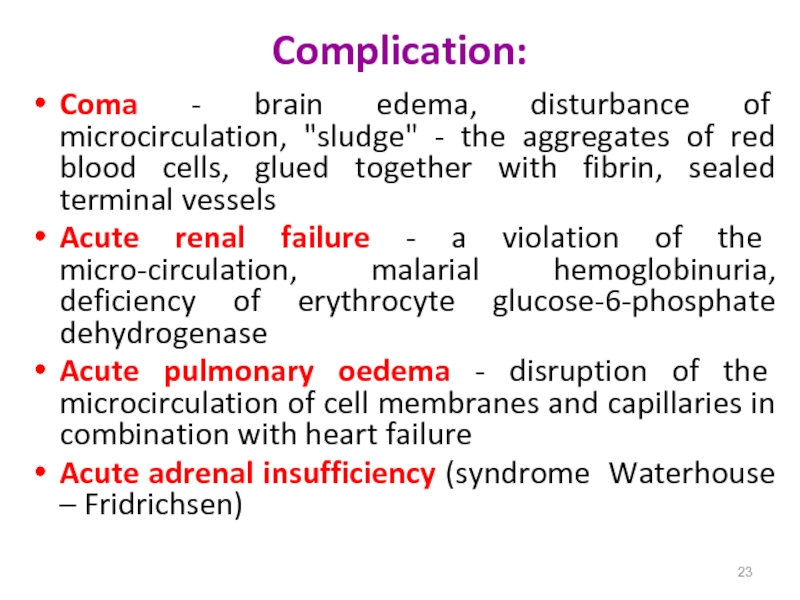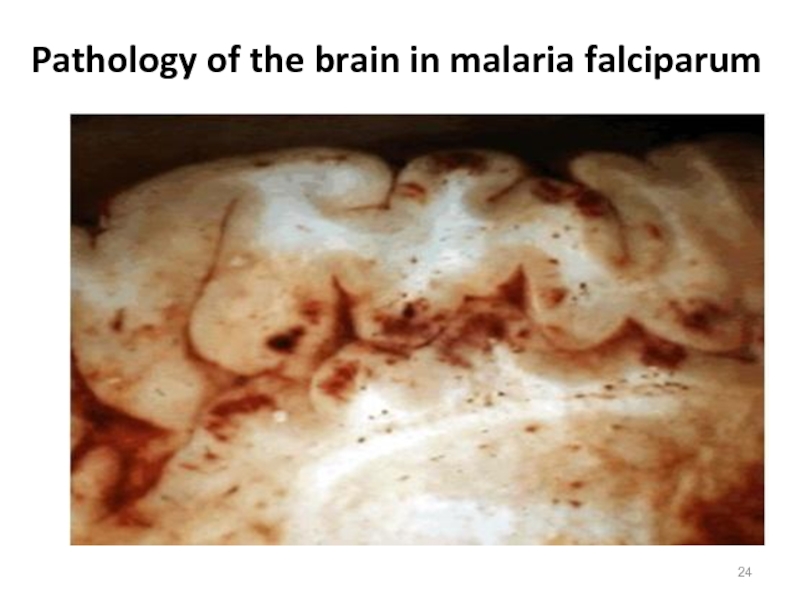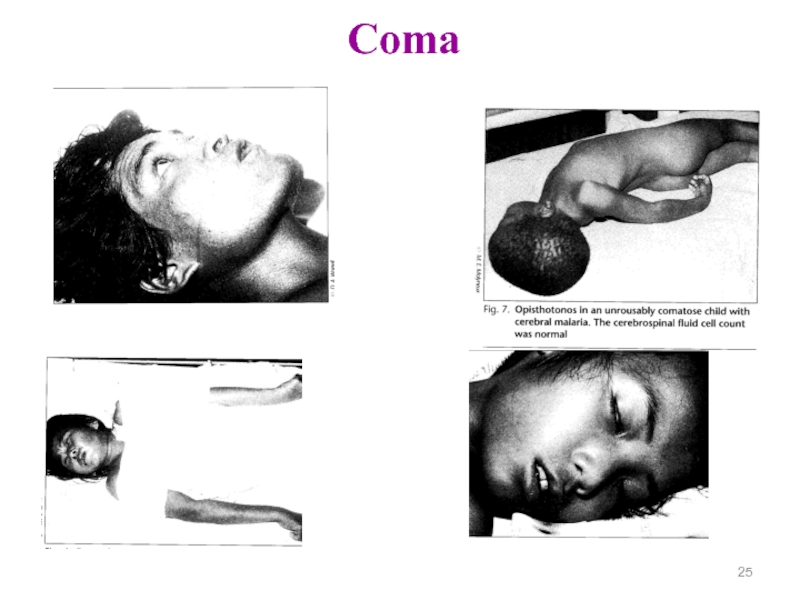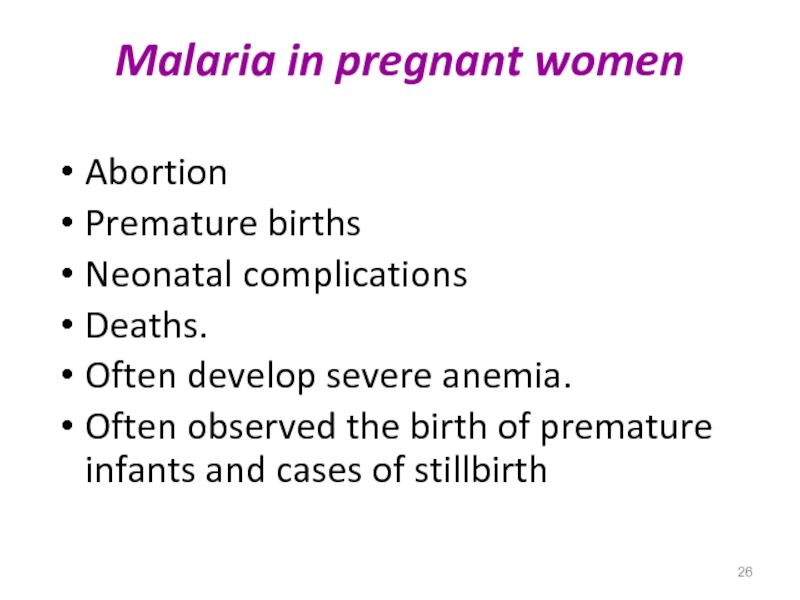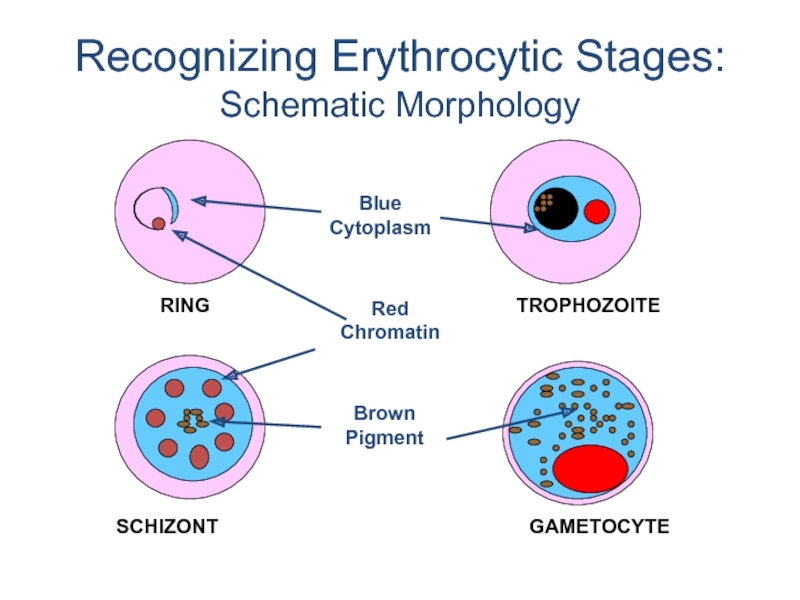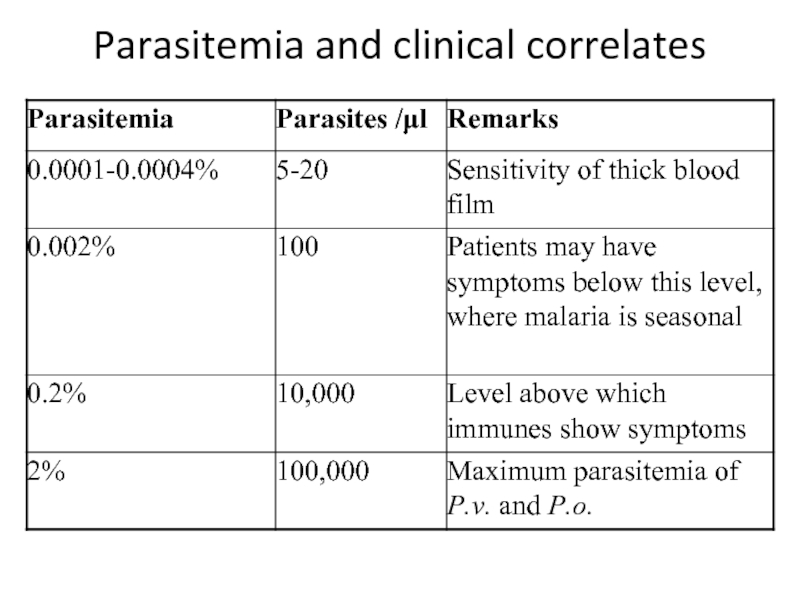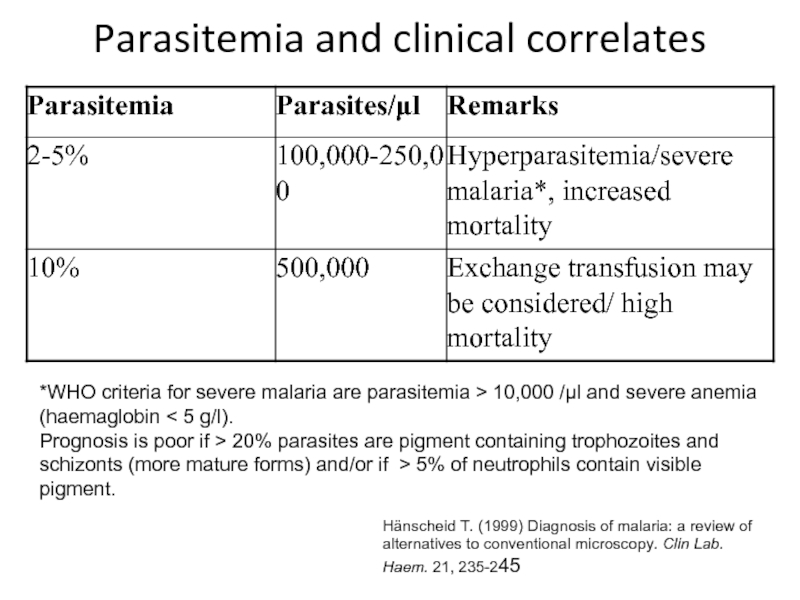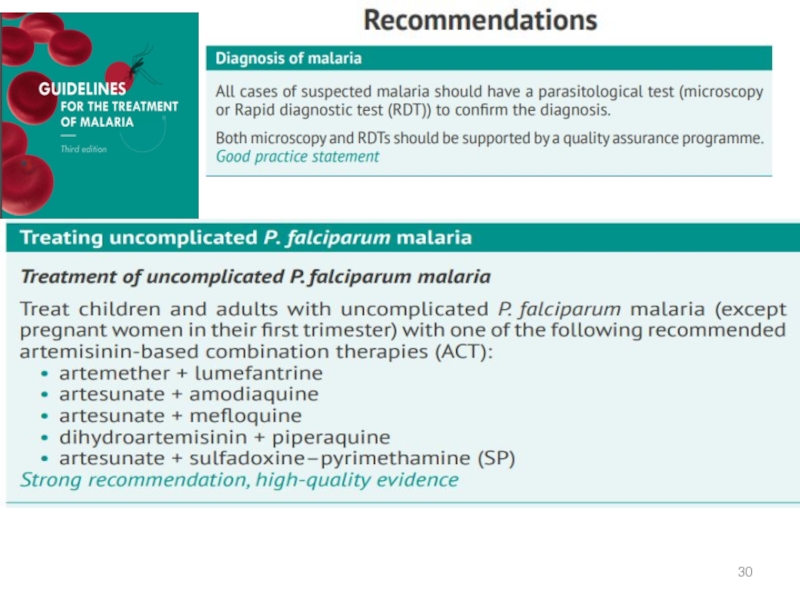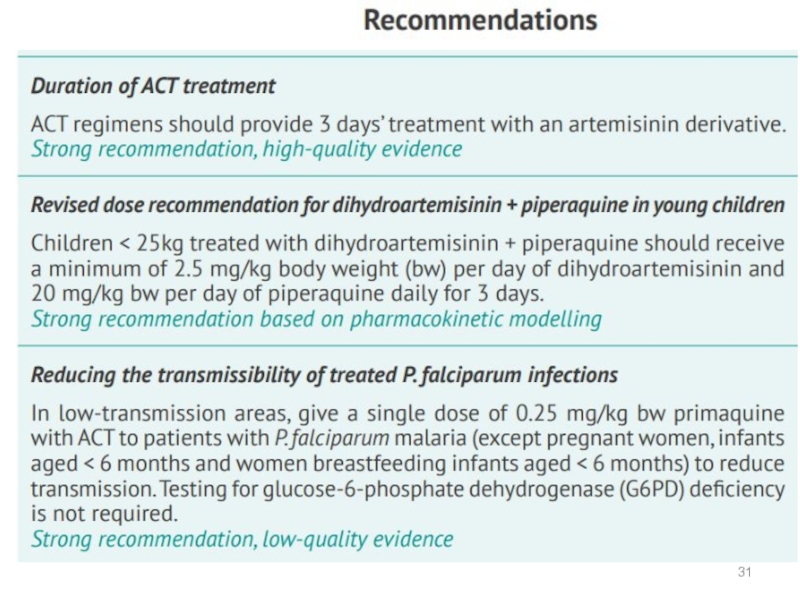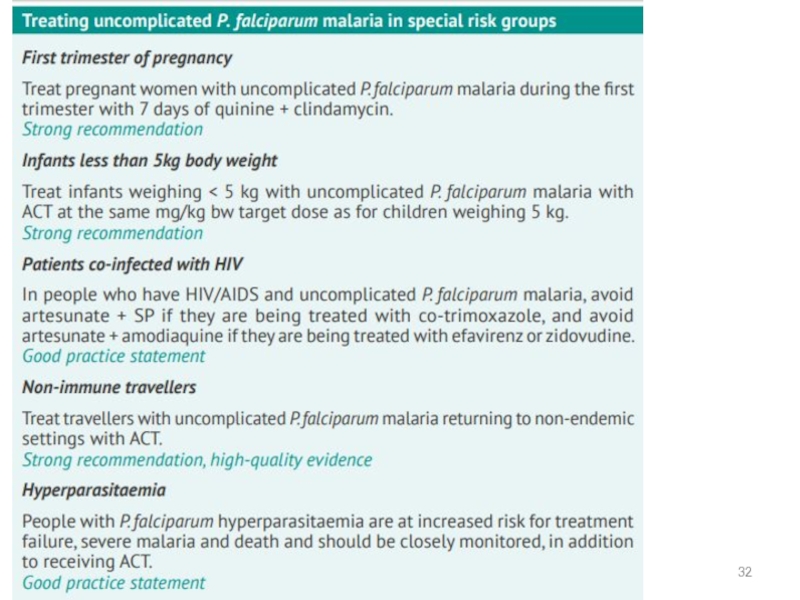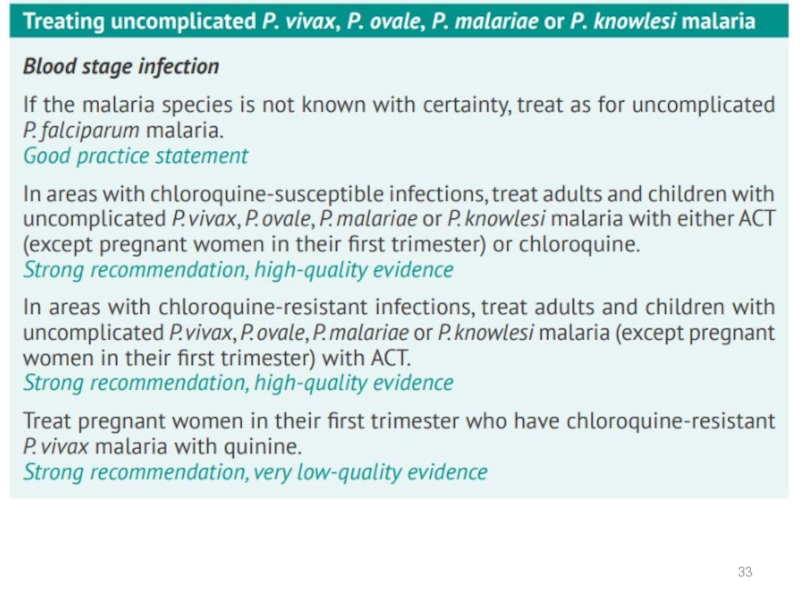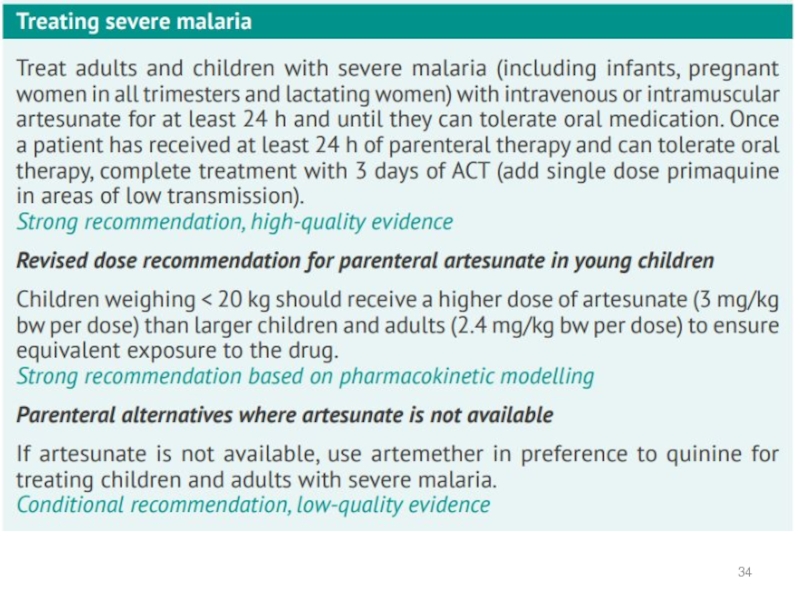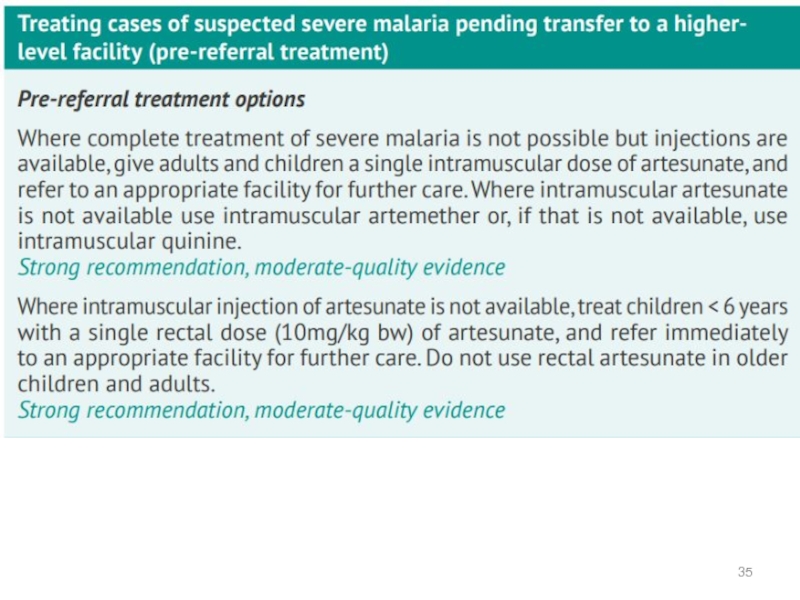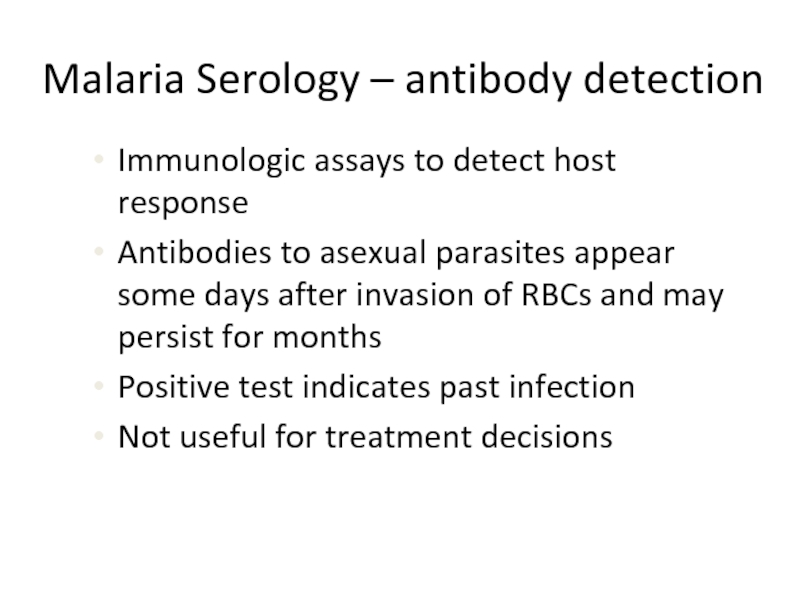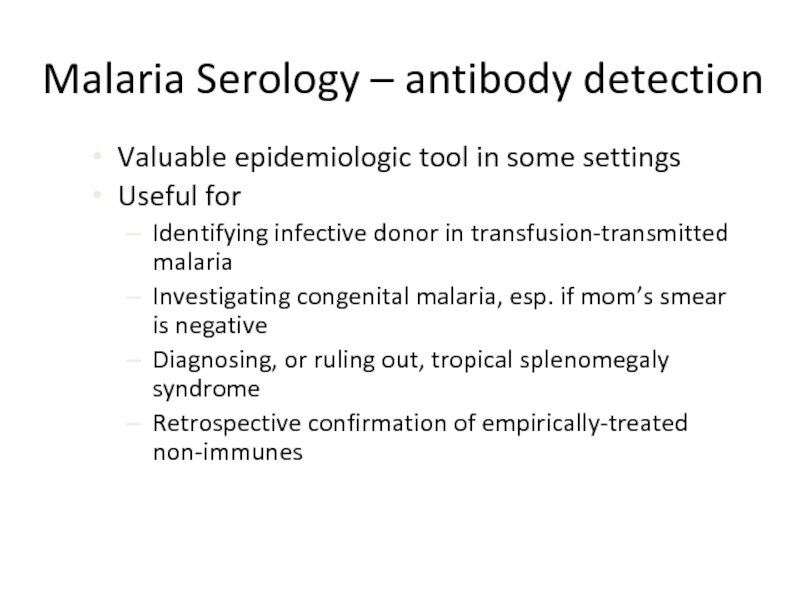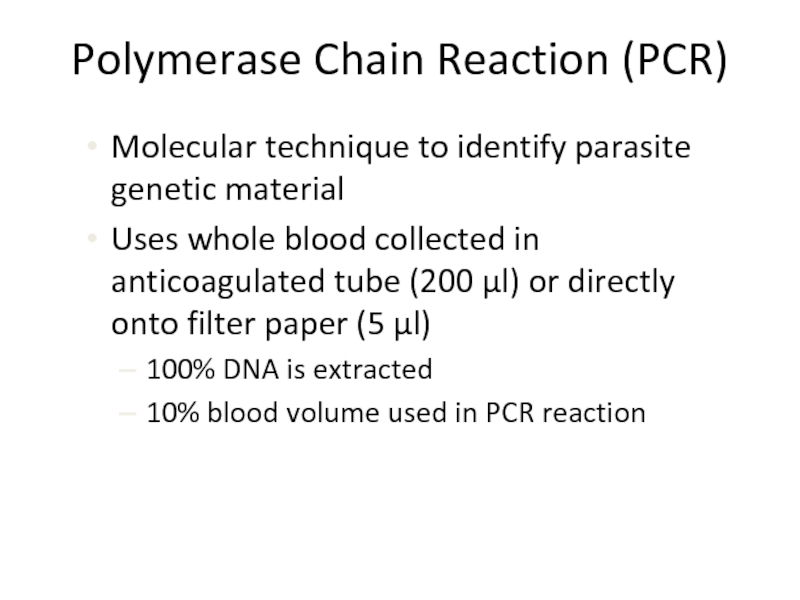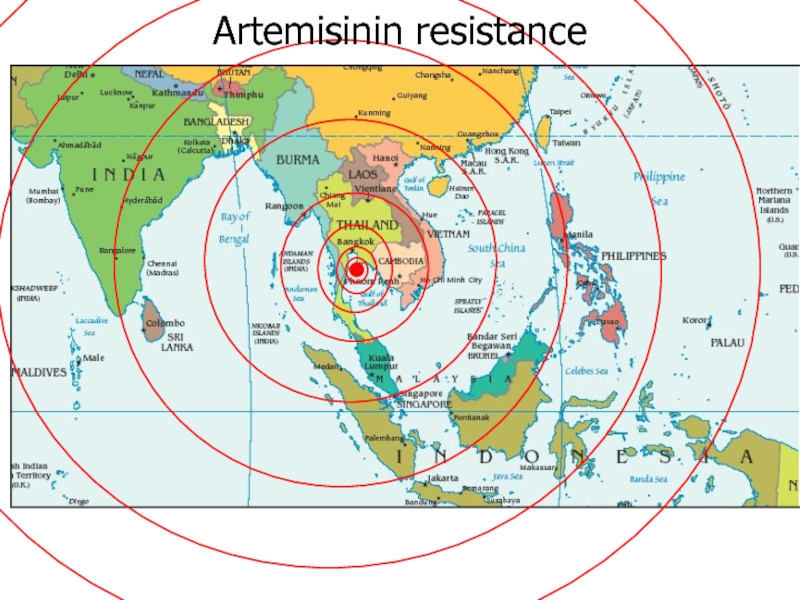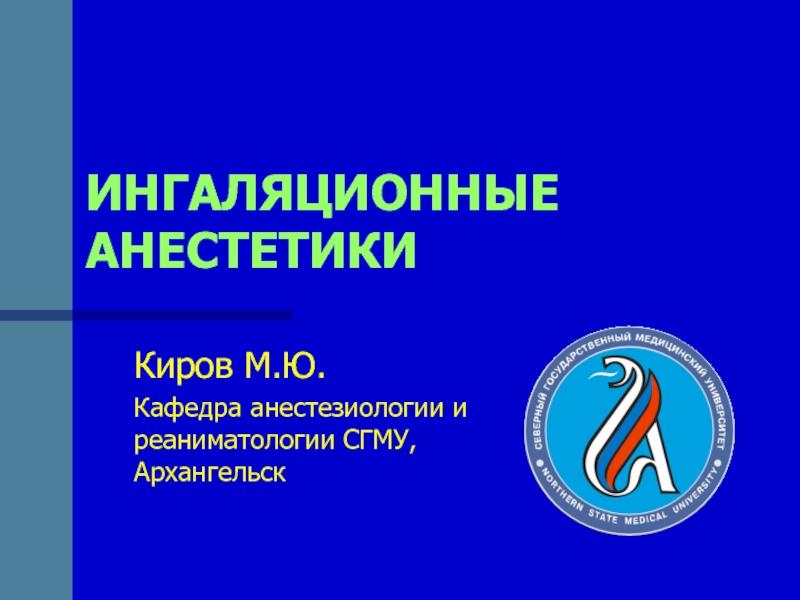- Главная
- Разное
- Дизайн
- Бизнес и предпринимательство
- Аналитика
- Образование
- Развлечения
- Красота и здоровье
- Финансы
- Государство
- Путешествия
- Спорт
- Недвижимость
- Армия
- Графика
- Культурология
- Еда и кулинария
- Лингвистика
- Английский язык
- Астрономия
- Алгебра
- Биология
- География
- Детские презентации
- Информатика
- История
- Литература
- Маркетинг
- Математика
- Медицина
- Менеджмент
- Музыка
- МХК
- Немецкий язык
- ОБЖ
- Обществознание
- Окружающий мир
- Педагогика
- Русский язык
- Технология
- Физика
- Философия
- Химия
- Шаблоны, картинки для презентаций
- Экология
- Экономика
- Юриспруденция
Malaria (Febris intermittens) презентация
Содержание
- 1. Malaria (Febris intermittens)
- 2. Overview Introduction Etiology, epidemiology Pathogenesis Clinical features Complications Diagnosis Treatment Prevention
- 3. Malaria is a life-threatening disease caused
- 4. Between 2010 and 2015, malaria incidence
- 8. Exo- erythrocytic (hepatic) cycle Malaria Life Cycle Life Cycle Schizogony Sporogony
- 10. Plasmodium spp. (Malaria) Pathology and clinical significance:
- 12. Clinical presentation Early symptoms Headache Malaise Fatigue
- 13. Malarial Paroxysm Prodrome 2-3 days before Malaise,
- 14. Types of Infections Recrudescence exacerbation of persistent
- 15. Clinical presentation Varies in severity and course
- 16. Malarial Paroxysm Periodicity Days 1 and
- 17. paroxysms associated with synchrony of merozoite release
- 18. Presentation of P.vivax Most people of West
- 19. Incubation period in non-immunes 12-17 days but
- 21. Lack classical paroxysm followed by asymptomatic period
- 22. Temperature curves
- 23. Complication: Coma - brain edema, disturbance
- 24. Pathology of the brain in malaria falciparum
- 25. Coma
- 26. Malaria in pregnant women Abortion Premature births
- 27. Recognizing Erythrocytic Stages: Schematic Morphology
- 28. Parasitemia and clinical correlates
- 29. Parasitemia and clinical correlates *WHO criteria for
- 36. Malaria Serology – antibody detection Immunologic assays
- 37. Malaria Serology – antibody detection Valuable epidemiologic
- 38. Polymerase Chain Reaction (PCR) Molecular technique to
- 39. Artemisinin resistance
Слайд 1 Malaria
(Febris intermittens)
Department of Infectious Diseases
Prepared by Professor Kutmanova
Слайд 2Overview
Introduction
Etiology, epidemiology
Pathogenesis
Clinical features
Complications
Diagnosis
Treatment
Prevention
Слайд 3 Malaria is a life-threatening disease caused by parasites that are
In 2015, 91 countries and areas had ongoing malaria transmission.
Malaria is preventable and curable, and increased efforts are dramatically reducing the malaria burden in many places.
Слайд 4 Between 2010 and 2015, malaria incidence among populations at risk
The WHO African Region carries a disproportionately high share of the global malaria burden. In 2015, the region was home to 90% of malaria cases and 92% of malaria deaths.
Слайд 7
Malaria in Kyrgyzstan in 1923-2002
0,001
0,01
0,1
1
10
100
1000
10000
1923
1926
1929
1932
1935
1938
1941
1944
1947
1950
1953
1956
1959
1962
1965
1968
1971
1974
1977
1980
1983
1986
1989
1992
1995
Fighting period
Liquidation
period
Period
of well-being
Register
Period
2000
1997
2001
2002
Recurrance
of Malaria
2744 сases.
28сases.
12 сases
13сases.
Intensive incident for 100 000 people
Absolute data.
Слайд 10Plasmodium spp. (Malaria)
Pathology and clinical significance:
When merozoits invade the blood cells,
Plasmodium falciparum is the most dangerous species.
P. malriae, P. vivax, and P. ovale cause milder form of the disease, probably because they invade either young or old red cells, but not both. This is in contrast to P. falciparum, which invades cells of all ages.
Plasmodium falciparum is characterized by persistent high fever and orthostatic hypertension. Infection can lead to capillary obstruction and death if treatment is not introduced.
Слайд 12Clinical presentation
Early symptoms
Headache
Malaise
Fatigue
Nausea
Muscular pains
Slight diarrhea
Slight fever, usually not intermittent
Could mistake for
Слайд 13Malarial Paroxysm
Prodrome 2-3 days before
Malaise, fever,fatigue, muscle pains, nausea, anorexia
Can mistake
Slight fever may worsen just prior to paroxysm
Paroxysm
Cold stage - rigors
Hot stage – Max temp can reach 40-41o C, splenomegaly easily palpable
Sweating stage
Lasts 8-12 hours, start between midnight and midday
Слайд 14Types of Infections
Recrudescence
exacerbation of persistent undetectable parasitemia, due to survival of
Relapse
reactivation of hypnozoites forms of parasite in liver, separate from previous infection with same species (P.v. and P.o.)
Recurrence or reinfection
exo-erythrocytic forms infect erythrocytes, separate from previous infection (all species)
Can not always differentiate recrudescence from reinfection
Слайд 15Clinical presentation
Varies in severity and course
Parasite factors
Species and strain of parasite
Geographic
Size of inoculum of parasite
Host factors
Age
Immune status
General health condition and nutritional status
Chemoprophylaxis or chemotherapy use
Mode of transmission
Mosquito
Bloodborne, no hepatic phase (transplacental, needlestick, transfusion, organ donation/transplant)
Слайд 16Malarial Paroxysm
Periodicity
Days 1 and 3 for P.v., P.o., (and P.f.) -
Usually persistent fever or daily paroxyms for P.f.
Days 1 and 4 for P.m. - quartian
Слайд 17paroxysms associated with synchrony of merozoite release
between paroxysms temper-ature is normal
falciparum may not exhibit classic paroxysms (continuous fever)
Malaria Paroxysm
tertian malaria
quartan malaria
Слайд 18Presentation of P.vivax
Most people of West African descent are resistant to
Lack Duffy blood group antigens needed for RBC invasion
Mild – severe anemia, thrombocytopenia, mild jaundice, tender hepatosplenomegaly
Splenic rupture carries high mortality
Headache, dizziness, muscle pain, malaise, anorexia, nausea, vague abdominal pain, vomiting
Fever constant or remittent
Слайд 19Incubation period in non-immunes 12-17 days but can be 8-9 months
Some strains from temperate zones show longer incubation periods, 250-637 days
First presentation of imported cases – 1 month – over 1 year post return from endemic area
Relapses
60% untreated or inadequately treated will relapse
Time from primary infection to relapse varies by strain
Treat blood stages as well as give terminal prophylaxis for hypnozoites
Presentation of P.vivax
Слайд 21Lack classical paroxysm followed by asymptomatic period
Headache, dizziness, muscle pain, malaise,
Fever constant or remittent
Postural hypotension, jaundice, tender hepatosplenomegaly
Can progress to severe malaria rapidly in non-immune patients
Cerebral malaria can occur
Parasites can sequester in tissues, not detected on peripheral smear
Presentation of P.falciparum
Слайд 23Complication:
Coma - brain edema, disturbance of microcirculation, "sludge" - the
Acute renal failure - a violation of the micro-circulation, malarial hemoglobinuria, deficiency of erythrocyte glucose-6-phosphate dehydrogenase
Acute pulmonary oedema - disruption of the microcirculation of cell membranes and capillaries in combination with heart failure
Acute adrenal insufficiency (syndrome Waterhouse – Fridrichsen)
Слайд 26Malaria in pregnant women
Abortion
Premature births
Neonatal complications
Deaths.
Often develop severe anemia.
Often observed
Слайд 29Parasitemia and clinical correlates
*WHO criteria for severe malaria are parasitemia >
Prognosis is poor if > 20% parasites are pigment containing trophozoites and schizonts (more mature forms) and/or if > 5% of neutrophils contain visible pigment.
Hänscheid T. (1999) Diagnosis of malaria: a review of alternatives to conventional microscopy. Clin Lab. Haem. 21, 235-245
Слайд 36Malaria Serology – antibody detection
Immunologic assays to detect host response
Antibodies
Positive test indicates past infection
Not useful for treatment decisions
Слайд 37Malaria Serology – antibody detection
Valuable epidemiologic tool in some settings
Useful for
Identifying
Investigating congenital malaria, esp. if mom’s smear is negative
Diagnosing, or ruling out, tropical splenomegaly syndrome
Retrospective confirmation of empirically-treated non-immunes
Слайд 38Polymerase Chain Reaction (PCR)
Molecular technique to identify parasite genetic material
Uses whole
100% DNA is extracted
10% blood volume used in PCR reaction
